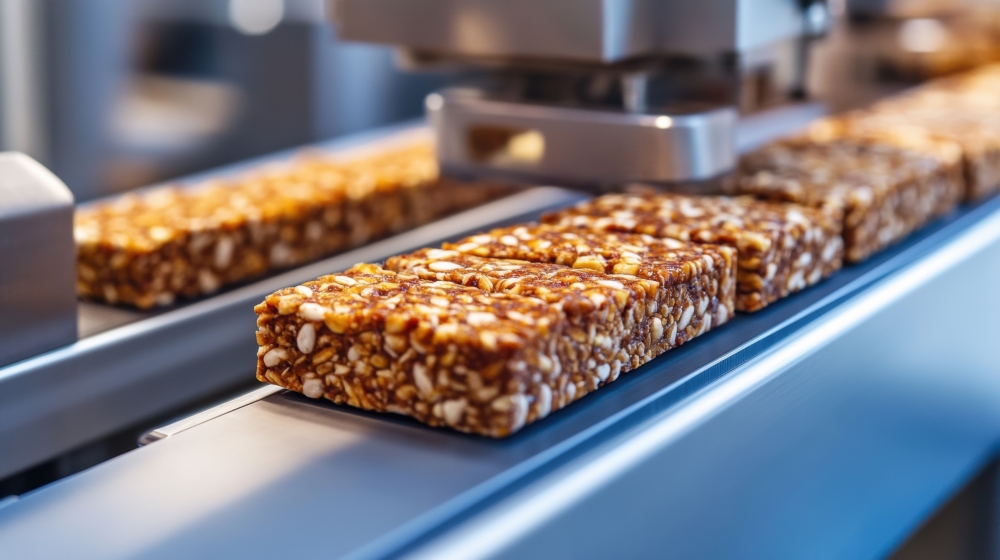Coatings Technology Blog
Lectrofluor® Proves a Cut Above the Rest on Sticky Slitting Blades

When people want to snack on the go, protein and nutrition bars are both popular and convenient, providing a flavorful blend of satiating ingredients — all in a palm-sized portion. Thanks to complex and exacting production processes, consumers can count on bars having consistent quality, taste and size. However, when sticky ingredients build up on bar production machine parts — such as the slitting blades that divide large slabs of product into smaller strands — that consistency gets compromised.
How Nutrition Bars Are Produced
Nutrition bars typically consist of wet and dry ingredients that are mixed, formed and transferred onto a conveyor in long slabs. Rollers compress the slabs, and a slitter cuts the slabs into long strips, or strands, to a specified width. The strands continue down the conveyor to a guillotine that chops the product perpendicularly into individual pieces at a desired length. Nutrition bars often contain honey or syrups that leave behind residues that stick to slitter blades, causing strands to have irregular edges or end products to lose their uniformity and go to waste. Preventing these outcomes requires cleaning and the associated downtime and costs.
Recently a specialty health bar manufacturer asked us to help address problems in the slitting blades in its bar processing machinery. The ingredients frequently stick to slitter blades mounted to a mandrel that determines bar widths, causing product misalignments and obstructions. Clearing jams and removing the stuck-on ingredients costs considerable time and money. The customer asked us to recommend a highly non-stick, FDA-compliant coating.
After consulting with us and testing various coatings, a Lectrofluor® surface treatment proved effective. This polymer-based coating’s dry lubricity provides a very low coefficient of friction (COF) and exhibits exceptional release properties to prevent sticky build-up in food production machinery where smooth, uninterrupted operation is critical. And, many Lectrofluor types are FDA/USDA compliant. Additional features and specifications include:
- Excellent mold release.
- Prevents abrasive wear and galling.
- Corrosion, radiation and UV resistance.
- Thickness range of 0.0005 to 0.030 inch.
Set a High Bar for Quality and Productivity With Lectrofluor
Our nutrition bar manufacturing customer reported a substantial reduction in shutdowns for cleaning and noted the slitting equipment’s greatly improved release properties. More consistent product quality was ensured and production runtimes were maximized. Lectrofluor was also applied to parts at a second facility and attained the same successful results.
When sticking threatens product quality consistency and equipment reliability, it’s time to ask our technical sales team to recommend an ideal Magnaplate non-stick coating that will ensure greater machine uptime and optimal productivity.
For more information about Lectrofluor, please visit our product page.